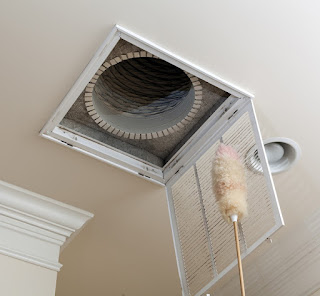What Are Mold and Mildew?
Both mold and mildew are common household fungi, but they are not the same kind of fungus. Mold is commonly found in household dust, whereas mildew tends to grow on flat surfaces. Both mold and mildew are airborne, and both change color with time.
Mold usually has a slimy or fuzzy texture and can look black, blue, green, or even red. It occurs on walls, ceilings, and on or around air ducts, as well as on food like bread or cheese. Black mold in particular (usually Stachybotrys chartarum) is associated with post-hurricane “sick house syndrome” and attendant health issues like exacerbated asthma, allergic reactions, and upper-respiratory infections.
Mildew, while also a fungus, grows on organic surfaces like wood, paper, leather, textiles, walls, ceilings, and, most famously, on the grout between both bathroom and kitchen tiles. It usually looks like a white powder at first and then turns shades of brown, yellow, or black as it ages.
Both mold and mildew require the same conditions for growth: moisture, heat, and darkness—a commonly-occurring combination in many areas of most homes. Thus, preventing or eliminating this habitat is instrumental in keeping mold and mildew at bay.
Good A/C Helps Eliminate the Habitat
The ideal habitats for mold and mildew contain high heat (between 77 and 87°F ), high humidity (between 62 and 93 percent), and a food source (organic material). Naturally, summer months see the biggest problems. The key is eliminating pockets of warm, dark moisture where mold and mildew can set up shop.
Leaks anywhere should be immediately repaired and dried, as should spills on upholstered surfaces, carpets, or floating floors. To reduce moisture, kitchens and bathrooms should be vented whenever in use. Air conditioning should help dehumidify the home, especially in the summer, but if an HVAC system isn’t properly configured or maintained, it can exacerbate rather than abate fungus problems. Home HVAC systems should be set to “automatic” rather than “on” both for energy efficiency and to optimize the dehumidifying effects. Trapping mold and mildew particles with the correctly-rated HVAC filter also helps prevent mold growth inside air ducts and vents.
For over 60 years, Massachusetts has relied on Rusty’s, Inc. for expert air conditioning service and installations. We can also repair or recalibrate any HVAC system for optimal efficiency, thereby reducing the potential for mold or mildew growth. For more information, contact us online or call 508-775-1303.





